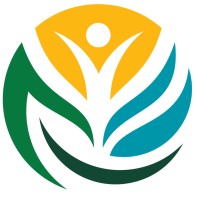Latest News
Public Health Goals for 27 chemicals have been finalized, and the technical support documents for each chemical is now available.
Request for public input on the agenda for Authoritative Bodies Workshop.
OEHHA announces a public comment period for 19 draft technical support documents for Public Health Goals (PHGs) for the following chemicals: atrazine; bentazon; cadmium; chromium; 1,2-dibromo-3-chloropropane (DBCP); 1,2-dichloroethane; 1,1-dichloroethylene; 1,2-dichloropropane; 1,3-dichloropropene (Telone); endrin; heptachlor and heptachlor epoxide; g -hexachlorocyclohexane (lindane); hexachlorocyclopentadiene; inorganic mercury; methoxychlor; thallium; 1,2,4-trichlorobenzene; trichloroethylene; and toluene.
This table summarizes the Public Health Goals for chemical contaminants in drinking water.
OEHHA published technical support documents for Public Health Goals (PHGs) for 20 chemicals in drinking water. These chemicals are: antimony, alachlor, benzo(a)pyrene, chlordane, copper, cyanide, dalapon, DEHP, dinoseb, endothall, ethylbenzene, FC-11, FC-113, fluoride, glyphosate, lead, nitrate and nitrite, oxamyl, pentachlorophenol, picloram, uranium (withdrawn June 29, 1998), xylene, 1,2-dichlorobenzene, 1,4-dichlorobenzene, and 2,4-dichlorophenoxyacetic acid.
OEHHA announced an extension of the comment period for the Draft Air Toxics "Hot Spots" Guidelines Part III: Technical Support Document for Determining Chronic Reference Exposure Levels
Availability of final data summaries and priorities for chemicals with respect to their potential to cause birth defects or other reproductive harm.
Chemicals listed effective December 26, 1997 as known to the State to cause reproductive toxicity via the State's Qualified Experts mechanism: Benzene.
Request for information on two chemicals to be considered by the Developmental and Reproductive Toxicant Identification Committee: Carbamazepine and Progesterone.
Request for information on Methyl Tertiary-Butyl Ether (MTBE), a chemical to be considered by OEHHA’s Science Advisory Board’s Carcinogen Identification Committee and Developmental and Reproductive Toxicant (DART) Identification Committee.
